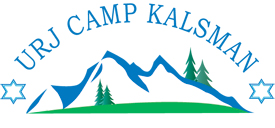Written by Jordan Magidson, Director of Education
Jewish holidays were always celebrated in a big way in my family. We loved the music, the ritual and the food that surround these celebrations. Whether it was rejoicing in Shabbat each week (even if that meant going to our favorite restaurant and saying motzi over the bread basket), hosting the Passover seder and stuffing myself with my mom’s brisket (it really is the best) or sitting in a darkened room, lit only by the lights of the menorah as we had our annual game of dreidel, the Jewish holidays were a way for us to put everything else aside and spend time together as a family.
The Jewish High Holy Days were especially meaningful for my mother and me. Every year we attend services together, although now that I live across the country from her, it is usually only for one holiday. When I was a kid, and then a teenager and college student, we spent both Rosh Hashanah and Yom Kippur at temple. Listening to our beloved Cantor Rose chant the High Holiday nusach (tunes) always filled us with such joy. The sound of the shofar got us ready for the New Year and spending all day praying and studying on Yom Kippur filled us with purpose (and kept us from thinking about how hungry we were—mostly). But there was one holiday in the High Holiday marathon that we didn’t pay too much attention to while I was growing up—Sukkot. Sure, I celebrated Sukkot in Sunday School as I made paper chains to decorate our congregation’s sukkah, or danced mayim in the social hall, but we never did much beyond that to recognize Sukkot.
That changed when I was in college. When I was a sophomore, my mom called to tell me she bought a sukkah. I was shocked as I thought, what would we do with a sukkah? But another wonderful family tradition started. With my aunt, uncle, and cousins, we began gathering each year to build our sukkah in the back yard. My uncle, the most handy of all of us, would build the sukkah with my mom directing him. My aunt would take my youngest cousin to pick pinecones, leaves, and other flora to decorate while I worked with my other cousin on those same paper chains I made as a kid and colored pictures of the ushpizin (the biblical and historical guests we “invite” into the sukkah each year). When it was all put together, we sat down as a family and ate dinner—always making sure to include new fruits as we fulfilled one of the mitzvot of Sukkot. It quickly became one of our favorite times together because we each had a role in making the celebration happen—from the oldest to the youngest. And now that I live so far from my family, it is probably the celebration I miss the most.
One of the many names for Sukkot is Z’man Simchateinu (Season of Our Rejoicing) because it is the only holiday in which the Torah actually commands us to rejoice. So this Sukkot we hope that you and your family find ways to celebrate and rejoice together. Here are just a few ideas from our URJ Camp Kalsman family to yours.
Edible Sukkah
Not everyone has the space or time to build a real sukkah, but you can get into the spirit of the holiday by making miniature sukkot with food. Spread peanut butter (or sunflower seed butter) on the edges of graham crackers to create a “U” shape. Stand it up on a plate, spreading more peanut butter (or substitute) along the top. Lay two to three celery stalks on top to create the schach (roof of the sukkah). Use a few raisins for decorations. If you want a sweeter version, you can use frosting, twizzlers, and fruit snacks as alternative.
Tamar’s Sukkah by Ellie Gellman
A great book for younger children, Tamar’s Sukkah by Ellie Gellman is a great way to teach your kids about what a sukkah is and why we build one each year. As a bonus, it also teaches children about how important our friendships are!
Giving Back
Sukkot is often thought of as the “Jewish Thanksgiving” because it is a harvest festival. It is the perfect opportunity for your family to do some volunteer work together! Spend your weekend volunteering at a food bank or go through your pantries to donate extra cans of food to a local shelter.
Synagogue Time
Many of your congregations will probably have a lot of fun family programming like “Pizza in the Hut” or potlucks. Take the opportunity to go to these events and have a meal in the sukkah with your congregational family.
